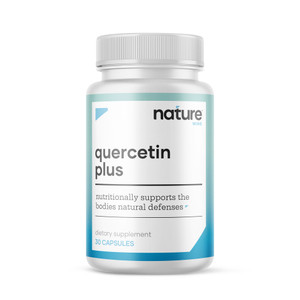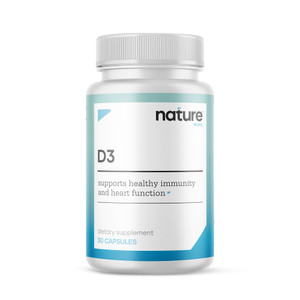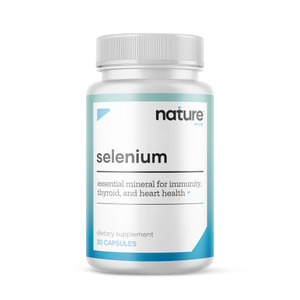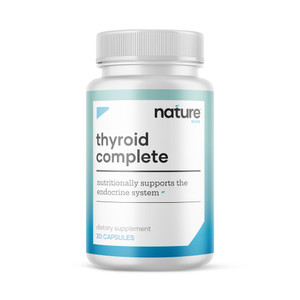Dr. Bryan Ardis Explains Why Zinc Plus
Zinc
Effect of Zinc Supplementation on Growth Outcomes in Children under 5 Years of Age
- https://www.mdpi.com/2072-6643/10/3/377
- We aim to systematically review and meta-analyze randomized controlled trials evaluating effects of preventive zinc supplementation for 3 months or longer during pregnancy or in children up to age 5 years on pregnancy outcomes and child growth
- Seventy-eight trials with 34,352 unique participants were identified, including 24 during pregnancy and 54 in infancy/childhood. Maternal zinc supplementation did not significantly increase birth weight (weighted mean difference (WMD) = 0.08 kg, 95%CI: −0.05, 0.22) or decrease the risk of low birth weight (RR = 0.76, 95%CI: 0.52–1.11).
- Zinc supplementation after birth increased height (WMD = 0.23 cm, 95%CI: 0.09–0.38), weight (WMD = 0.14 kg, 95%CI: 0.07–0.21), and weight-for-age Z-score (WMD = 0.04, 95%CI: 0.001–0.087), but not height-for-age Z-score (WMD = 0.02, 95%CI: −0.01–0.06) or weight-for-height Z score (WMD = 0.02, 95%CI: −0.03–0.06).
- Child age at zinc supplementation appeared to modify the effects on height (P-interaction = 0.002) and HAZ (P-interaction = 0.06), with larger effects of supplementation starting at age ≥2 years (WMD for height = 1.37 cm, 95%CI: 0.50–2.25; WMD for HAZ = 0.12, 95%CI: 0.05–0.19). No significant effects of supplementation were found on the risk of stunting, underweight or wasting
- the current meta-analysis indicates that zinc supplementation in infants and early childhood, increases specific growth outcomes, with evidence for a potentially stronger effect after 2 years of age. These findings inform recommendation and policy development for zinc supplementation to improve growth among young children
Zinc lozenges and the common cold: a meta-analysis comparing zinc acetate and zinc gluconate, and the role of zinc dosage
- https://journals.sagepub.com/doi/10.1177/2054270417694291
- Placebo-controlled zinc lozenge trials, in which the zinc dose was > 75 mg/day
- Seven randomised trials with 575 participants with naturally acquired common colds
- The mean common cold duration was 33% (95% CI 21% to 45%) shorter for the zinc groups of the seven included trials.
- Three trials that used lozenges composed of zinc acetate found that colds were shortened by 40% and four trials that used zinc gluconate by 28%.
- Five trials used zinc doses of 80-92 mg/day, common cold duration was reduced by 33%, and two trials used zinc doses of 192-207 mg/day and found an effect of 35%.
Zinc supplementation decreases incidence of infections in the elderly: effect of zinc on generation of cytokines and oxidative stress
- https://www.sciencedirect.com/science/article/pii/S0002916523279939?via%3Dihub
- A randomized, double-blind, placebo-controlled trial of zinc supplementation was conducted in elderly subjects. Fifty healthy subjects of both sexes aged 55-87 y and inclusive of all ethnic groups were recruited for this study from a senior center. The zinc-supplemented group received zinc gluconate (45 mg elemental Zn/d) orally for 12 mo
- Compared with a group of younger adults, at baseline the older subjects had significantly lower plasma zinc, higher ex vivo generation of inflammatory cytokines and interleukin 10, and higher plasma oxidative stress markers and endothelial cell adhesion molecules.
- The incidence of infections and ex vivo generation of tumor necrosis factor alpha and plasma oxidative stress markers were significantly lower in the zinc-supplemented than in the placebo group.
- Plasma zinc and phytohemagglutin-induced interleukin 2 mRNA in isolated mononuclear cells were significantly higher in the zinc-supplemented than in the placebo group.
- After zinc supplementation, the incidence of infections was significantly lower, plasma zinc was significantly higher, and generation of tumor necrosis factor alpha and oxidative stress markers was significantly lower in the zinc-supplemented
Zinc decreases C-reactive protein, lipid peroxidation, and inflammatory cytokines in elderly subjects: a potential implication of zinc as an atheroprotective agent
- https://www.ncbi.nlm.nih.gov/pmc/articles/PMC2869512/
- We recruited 40 healthy elderly subjects (aged 56–83 y) and randomly assigned them to 2 groups. One group was given an oral dose of 45 mg zinc/d as a gluconate for 6 mo. The other group was given a placebo
- After 6 mo of supplementation, the intake of zinc, compared with intake of placebo, increased the concentrations of plasma zinc and decreased the concentrations of plasma high-sensitivity C-reactive protein (hsCRP), interleukin (IL)-6, macrophage chemoattractant protein 1 (MCP-1), vascular cell adhesion molecule 1 (VCAM-1), secretory phospholipase A2, and malondialdehyde and hydroxyalkenals (MDA+HAE) in elderly subjects.
- Regression analysis showed that changes in concentrations of plasma zinc were inversely associated with changes in concentrations of plasma hsCRP, MCP-1, VCAM-1, and MDA+HAE after 6 mo of supplementation.
- we showed that zinc decreased the generation of tumor necrosis factor-α, IL-1β, VCAM-1, and MDA+HAE and the activation of nuclear transcription factor κB and increased antiinflammatory proteins A20 and peroxisome proliferator–activated receptor-α in human monocytic leukemia THP-1 cells and human aortic endothelial cells compared with zinc-deficient cells.
The effects of zinc supplementation on wound healing and metabolic status in patients with diabetic foot ulcer
- The current randomized, double-blind, placebo-controlled trial was conducted among 60 patients (aged 40-85 years old) with grade 3 diabetic foot ulcer.
- Participants were randomly divided into two groups (30 participants in each group) to take either 220 mg zinc sulfate supplements containing 50 mg elemental zinc or placebo daily for 12 weeks
- zinc supplementation was associated with significant reductions in ulcer length (-1.5 ± 0.7 vs. -0.9 ± 1.2 cm, p = 0.02) and width (-1.4 ± 0.8 vs. -0.8 ± 1.0 cm, p = 0.02). In addition, changes in fasting plasma glucose (-40.5 ± 71.0 vs. -3.9 ± 48.5 mg/dl, p = 0.02), serum insulin concentration (-8.0 ± 15.4 vs. +1.1 ± 10.3 µIU/ml, p = 0.009), homeostasis model of assessment-estimated insulin resistance (-3.9 ± 7.1 vs. +0.8 ± 5.9, p = 0.007), the quantitative insulin sensitivity check index (+0.01 ± 0.03 vs. -0.002 ± 0.02, p = 0.04) and HbA1c (-0.5 ± 0.8 vs. -0.1 ± 0.5%, p = 0.01) in the supplemented group were significantly different from the changes in these indicators in the placebo group.
- Additionally, significant increases in serum HDL-cholesterol (+4.1 ± 4.3 vs. +1.1 ± 5.1 mg/dl, p = 0.01), plasma total antioxidant capacity (+91.7 ± 213.9 vs. -111.9 ± 188.7 mmol/L, p < 0.01) and total glutathione (+68.1 ± 140.8 vs. -35.0 ± 136.1 µmol/L, p = 0.006), and significant decreases in high sensitivity C-reactive protein (-20.4 ± 24.6 vs. -6.8 ± 21.3 µg/ml, p = 0.02) and plasma malondialdehyde concentrations (-0.6 ± 0.9 vs. -0.2 ± 0.7 µmol/L, p = 0.03) were seen following supplementation with zinc compared with the placebo.
- supplementation for 12 weeks among diabetic foot ulcer patients had beneficial effects on parameters of ulcer size and metabolic profiles.
Global and regional child mortality and burden of disease attributable to zinc deficiency
- https://www.nature.com/articles/ejcn20089
- Zinc deficiency was responsible for 453,207 deaths (4.4% of childhood deaths), and 1.2% of the burden of disease (3.8% among children between 6 months and 5 years) in these three regions in 2004.
- Of these deaths, 260,502 were in Africa, 182,546 in Asia and 10,159 in Latin America.
- Zinc deficiency accounted for 14.4% of diarrhea deaths, 10.4% of malaria deaths and 6.7% of pneumonia deaths among children between 6 months and 5 years of age.
The Effectiveness of Zinc Supplementation in Taste Disorder Treatment: A Systematic Review and Meta-Analysis of Randomized Controlled Trials
- https://www.hindawi.com/journals/jnme/2023/6711071/
- In total, we included 12 randomized controlled trials with 938 subjects. The intervention includes zinc (sulfate, gluconate, picolinate, polaprezinc, and acetate), and the pooled results of the meta-analysis of subjects with idiopathic and zinc-deficient taste disorder indicate that improvements in taste disorder occurred more frequently in the experimental group compared to the control group (RR = 1.38; 95% CI: 1.16, 1.64, p=0.0002). Zinc supplementation appears to confer a greater improvement in taste perception amongst those with chronic renal disease using zinc acetate (overall RR = 26.69, 95% CI = 5.52–129.06, p < 0.0001). The doses are equivalent to 17 mg–86.7 mg of elemental zinc for three to six months.
- Zinc supplementation is an effective treatment for taste disorders in patients with zinc deficiency, idiopathic taste disorders, and in patients with taste disorders induced by chronic renal failure when given in high doses ranging from 68 to 86.7 mg/d for up to six months.
Zinc status and taste acuity in older Europeans: the ZENITH study
- https://www.nature.com/articles/1602295
- The aim of this study was to explore associations between zinc status and taste acuity in healthy older European adults aged 55–90 y.
- Higher erythrocyte zinc status was associated with better acuity for salt (sodium chloride) taste in the sample as a whole (P=0.012) (n=385). Higher serum zinc levels were associated with greater sensitivity to sour taste (citric acid) (P=0.015) only in the older groups (aged 70–90 y).
Copper
Copper as a target for prostate cancer therapeutics: copper-ionophore pharmacology and altering systemic copper distribution
- https://www.oncotarget.com/article/9245/text/
- Copper-ionophores that elevate intracellular bioavailable copper display significant therapeutic utility against prostate cancer cells in vitro and in TRAMP (Transgenic Adenocarcinoma of Mouse Prostate) mice
- TRAMP adenocarcinoma cells harbored markedly elevated oxidative stress and diminished glutathione (GSH)-mediated antioxidant capacity, which together conferred selective sensitivity to prooxidant ionophoric copper. Copper-ionophore treatments [CuII(gtsm), disulfiram & clioquinol] generated toxic levels of reactive oxygen species (ROS) in TRAMP adenocarcinoma cells
- Our results provide a basis for the pharmacological activity of copper-ionophores and suggest they are amendable for treatment of patients with prostate cancer. Additionally, recent in vitro and mouse xenograft studies have suggested an increased copper requirement by prostate cancer cells.
- We demonstrated that prostate adenocarcinoma development in TRAMP mice requires a functional supply of copper and is significantly impeded by altered systemic copper distribution.
- The presence of a mutant copper-transporting Atp7b protein (tx mutation: A4066G/Met1356Val) in TRAMP mice changed copper-integration into serum and caused a remarkable reduction in prostate cancer burden (64% reduction) and disease severity (grade), abrogating adenocarcinoma development
Copper oxide nanoparticles inhibit pancreatic tumor growth primarily by targeting tumor initiating cells
- https://www.nature.com/articles/s41598-019-48959-8?utm_medium=affiliate&utm_source=commission_junction&utm_campaign=CONR_PF018_ECOM_GL_PHSS_ALWYS_DEEPLINK&utm_content=textlink&utm_term=PID100090071&CJEVENT=4e7b18eafd0c11ee81dd00290a1eba24
- treatment with CuO-NPs decreases cell viability and increases apoptosis in TIC-enriched PANC1 cultures to a greater extent than in standard PANC1 cultures. These effects are associated with increased reactive oxygen species (ROS) levels, and reduced mitochondrial membrane potential. Furthermore, we demonstrate that CuO-NPs inhibit tumor growth in a pancreatic tumor model in mice
- VIEW the link to see all available tables
Pea powder
Pea Albumin Attenuates Dextran Sulfate Sodium-Induced Colitis by Regulating NF-κB Signaling and the Intestinal Microbiota in Mice
- https://www.mdpi.com/2072-6643/14/17/3611
- Six-week-old C57BL/6N male mice received an equivalent volume (200 μL) of sterile phosphate balanced solution, 0.375, 0.75, or 1.50 g/kg body weight (BW) of pea albumin that was subjected to 2.0% DSS for 7 days to induce colitis
- Our results show that pea albumin alleviates DSS-induced BW loss, colon length shortening, enhanced MPO activity, cytokines secretion, mucus deficiency, and inflammatory cell infiltration, as well as enhanced pro-inflammatory genes expression
- pea albumin oral administration restored gut microbiota dysbiosis as evidenced by enhanced α-diversity, restored β-diversity, and promoted relative abundance of Lactobacillus and Lachnospiraceae_NK4A136_group
- pea albumin plays a protective role in DSS-induced colitis by reducing inflammatory cell infiltration, pro-inflammatory genes expression and pro-inflammatory cytokines release, inactivation of NF-κB signal, and gut microbiota modulation.
Millet flour
- Evaluation of Anti-cancer Potential of Ragi Bifunctional Inhibitor (RBI) from Eleusine coracana on Human Chronic Myeloid Leukemia Cells
- https://d1wqtxts1xzle7.cloudfront.net/45402803/EJPSB_6SI2103-108o-libre.pdf?1462531146=&response-content-disposition=inline%3B+filename%3DEvaluation_of_Anti_cancer_Potential_of_R.pdf&Expires=1713393905&Signature=bcLDdm5YdAywaeskNM-4HHZG8qEKzFEogbvKyWczSdc-9un5g0XtwFV2~W0jIYMa~UGZyy4fj5f96Bud7E7yTe1q~Kiwg5jPy7uDP8uLj2BOImz8VsbRlrEtVdBbtT3w3P~0ESo~evVNd2ClSVdFtD7yvd4giSCBWZoqbQbyWP-o47m6APK83c-OiRNocC5N-LdvQ0sfCbSQPYQfNedEDJTPlHDON6u6HqI6Ake11T4SnH18dbmlQZWrNT3ry-lkGs0iVrTHSChJ8CPRn~VYI7p9gbkHmo9fNSqJzwHXYH8~xKz2BnZ1k6MQJzuE7D-UK7rk9PEvC6TWA~RPgt-t2A__&Key-Pair-Id=APKAJLOHF5GGSLRBV4ZA
- Finger millet (ragi), a staple food crop, is well known as a super cereal for its excellent nutritional value, long-term storage potential and ethno-medicinal characteristics. Ragi bifunctional inhibitor (RBI) from Eleusine coracana Gaertn. (ragi/finger millet) belonging to cereal alpha-amylase/protease inhibitor family, inhibits alpha-amylase and trypsin simultaneously.
- Several seed protease inhibitors are known for their protective as well as curative role against many types of human cancers.
- Recently, the anti-cancer activity of ragi seed extract on K562 chronic myeloid leukemia cells was explored. In the present study, RBI was purified from finger millet seeds by affinity chromatography followed by FPLC (Fast Protein Liquid Chromatography) size exclusion separation method.
- Purified RBI showed cytotoxicity against K562 chronic myeloid leukemia cells (IC50 = 20 μg/ml) but, not against normal human peripheral blood mononuclear cells. Reduction of cellular proliferation and induction of apoptosis of K562 cells by purified RBI was determined by MTT (3-4,5- dimethylthiazole-2-yl)-2,5-diphenyltetrazolium bromide) assay and flow cytometry analysis.
- This investigation being the first report on the anti-proliferative potential of RBI from edible ragi seeds, might provide a future preventive as well as curative natural solution for chronic myeloid leukemia.
Dietary Supplementation of Foxtail Millet Ameliorates Colitis-Associated Colorectal Cancer in Mice via Activation of Gut Receptors and Suppression of the STAT3 Pathway
- https://www.mdpi.com/2072-6643/12/8/2367
- This study sought to investigate the effects of foxtail millet and rice, two common staple grains in Asia, on the progression of colitis-associated colorectal cancer (CAC) and define the mechanism involved. In total, 40 BALB/c mice were randomized into four groups. The Normal and azoxymethane/dextran sodium sulfate (AOM/DSS) groups were supplied with an AIN-93G diet, while the millet- and rice-treated groups were supplied with a modified AIN-93G diet.
- Compared to the AOM/DSS-induced CAC mice supplemented with rice, an increased survival rate, suppressed tumor burden, and reduced disease activity index were observed in the millet-treated group. The levels of IL-6 and IL-17 were decreased in the millet-treated group compared to both the AOM/DSS and AOM/DSS + rice groups. Millet treatment inhibited the phosphorylation of STAT3 and the related signaling proteins involved in cell proliferation, survival and angiogenesis
- millet-treatment increased the abundance of Bifidobacterium and Bacteroidales_S24-7 compared to the rice-treated mice. This study could help researchers to develop better dietary patterns that work against inflammatory bowel disease (IBD) and for CAC patients.
Lentil powder
- Lentil Sprouts Effect On Serum Lipids of Overweight and Obese Patients with Type 2 Diabetes
- https://hpp.tbzmed.ac.ir/Article/HPP_2790_20150226000007
- Forty- eight overweight and obese type 2 diabetic patients, September and November2013, 30-65 years, participated in this clinical trial and randomly divided into two groups; LS group and controls. Patients in control group received conventional drug therapy, while patients in LS group received 60 g LS daily during 8 weeks along with routine medication.
- Thirty-nine patients completed the study. After 8 weeks, serum levels of HDL-C was higher in the LS group compared to control group (48.3 ±1.9 vs. 42.8±1.7, P<0.03). TG and ox-LDL were lower in the LS group compared to controls [(127±13.4 vs. 170± 12.4.P<0.01) and (83.3±29.1 vs. 98.7±28.2.P<0.6)].
Bioaccessibility, in vitro antioxidant and anti-inflammatory activities of phenolics in cooked green lentil (Lens culinaris)
- https://www.sciencedirect.com/science/article/abs/pii/S1756464617301202?via%3Dihub
- The bioaccessibility, antioxidant and anti-inflammatory activities of phenolics in a cooked green lentil (Lens culinaris) (cultivar Greenland) was studied using a simulated upper gastrointestinal (UGI) digestion model
- The amount of released soluble phenolics increased stepwise from gastric to intestinal digestion phase. The bioaccessibility of phenolics ranged from 27 to 67% after UGI digestion. Flavonols were the main phenolic group and were found to remain relatively stable during UGI digestion.
- Flavanols were mainly released after intestinal digestion as opposed to phenolic acids which were mainly released from food matrix in the gastric phase (21–45%) but not detected following intestinal digestion. Phenolics of the nondigested lentil showed dose dependent anti-inflammatory activity as seen in significant inhibition of the pro-inflammatory cytokines COX-2, IL-1β and IL-6 in TNF-α-induced inflammation in Caco-2 cells.
- The Antioxidant and anti-inflammatory activities were positively correlated with the total and individual phenolic contents.
Lentil Sprouts Effect On Serum Lipids of Overweight and Obese Patients with Type 2 Diabetes
- https://hpp.tbzmed.ac.ir/Article/HPP_2790_20150226000007
- Forty- eight overweight and obese type 2 diabetic patients, September and November2013, 30-65 years, participated in this clinical trial and randomly divided into two groups
- Patients in control group received conventional drug therapy, while patients in LS group received 60 g LS daily during 8 weeks along with routine medication
- Thirty-nine patients completed the study. After 8 weeks, serum levels of HDL-C was higher in the LS group compared to control group (48.3 ±1.9 vs. 42.8±1.7, P<0.03). TG and ox-LDL were lower in the LS group compared to controls [(127±13.4 vs. 170± 12.4.P<0.01) and (83.3±29.1 vs. 98.7±28.2.P<0.6)].
Polyphenol-Rich Lentils and Their Health Promoting Effects
- https://www.mdpi.com/1422-0067/18/11/2390
- Several studies have demonstrated that the consumption of lentil is immensely connected to the reduction in the incidence of diseases such as diabetes, obesity, cancers and cardiovascular diseases due to its bioactive compounds
- Tables provided in the link
Chlorophyll
Wheatgrass: Green Blood can Help to Fight Cancer
- https://jcdr.net/article_fulltext.asp?issn=0973-709x&year=2017&volume=11&issue=6&page=ZC40&issn=0973-709x&id=10057
- Wheatgrass is the young grass of the wheat plant ‘Tritcumaestivum Linn’, family Poaceae (Gramineae). It contains a number of vitamins, mineral, amino acids and vital enzymes, these play an important role in the anticancer approach of this herbal product. It is also called as ‘green blood’ because of its high content of chlorophyll, which bears a structural similarity to haemoglobin and this result in high oxygen supply to all the body tissues.
- The aim of the study was to assess the effect of the aqueous wheat grass extract on KB cell line(OSCC) by MTT assay.
- A 41.4% of OSCC cell inhibition was observed at 1000 µg/ml dilution of aqueous wheatgrass extract in 24 hours.
- The aqueous extract of wheatgrass has an inhibitory effect on the oral cancer cell line proliferation.
Wheat Grass Juice reduces Transfusion Requirement in Patients with Thalassemia Major: A Pilot Study
- https://www.indianpediatrics.net/july2004/july-716-720.htm
- The patients consumed about 100 mL of wheat grass juice daily
- Observations recorded during the period of intake of wheat grass juice were compared with one-year period preceding it. Variables recorded were the interval between transfusions, pre-transfusion hemoglobin, amount of blood transfused and the body weight. A beneficial effect of wheat grass juice was defined as decrease in the requirement of packed red cells (measured as grams/Kg body weight/year) by 25% or more. 16 cases were analyzed. Blood transfusion requirement fell by >25% in 8 (50%) patients with a decrease of >40% documented in 3 of these. No perceptible adverse effects were recognized.
Cancer chemoprevention by dietary chlorophylls: A 12,000-animal dose-dose matrix biomarker and tumor study
- https://www.sciencedirect.com/science/article/abs/pii/S0278691511005734?via%3Dihub
- The dose–dose matrix design employed an initial 12,360 rainbow trout, which were treated with 0–4000 ppm dietary Chl along with 0–225 ppm DBC for up to 4 weeks.
- Chl co-treatment provided a dose–responsive reduction in total DBC-DNA adducts without altering relative adduct intensities along the chromatographic profile
- Chl co-treatment substantially inhibited incidence and multiplicity at DBC doses up to their maximum-effect dose. These results show that Chl concentrations encountered in Chl-rich green vegetables can provide substantial cancer chemoprotection, and suggest that they do so by reducing carcinogen bioavailability
Sodium copper chlorophyllin: in vitro digestive stability and accumulation by Caco-2 human intestinal cells
- https://pubs.acs.org/doi/10.1021/jf010869g
- Three preparations were subjected to in vitro digestion: SCC in water, SCC in water + 10% corn oil, and SCC in applesauce.
- Greater than 90% of Cu(II)chlorin e(6) was degraded to undetermined products during digestion. Recovery of Cu(II)chlorin e(6) after digestion was increased by incorporation of SCC into applesauce, suggesting a protective role of the inclusion matrix for stabilization of labile SCC components.
- Cellular accumulation from media containing 0.5 to 60 ppm SCC was linear with intracellular content ranging between 0.2 and 29.6 microg of total SCC per mg of cellular protein.
- Uptake of SCC by Caco-2 cells was significantly (p < 0.01) lower in cultures incubated at 4 degrees C than in those incubated at 37 degrees C.
- Although intracellular SCC was transported into both apical and basolateral compartments when Caco-2 cells were grown on inserts, apical efflux was significantly greater (p < 0.01) than basolateral efflux. Stability of Cu(II)chlorin e(4) during in vitro digestion and effective uptake by Caco-2 enterocyte-like cells support the likelihood that a portion of this SCC component or its metabolites is absorbed from the human intestine.













